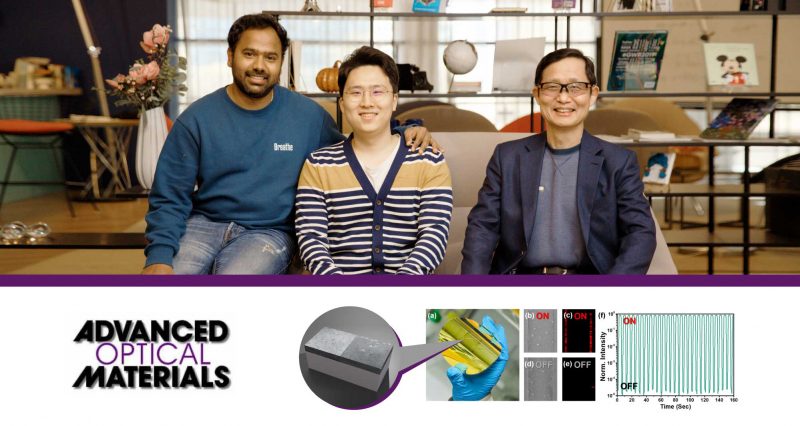A research team, led by Professor Dai-Sik Kim in the Department of Physics at UNIST has developed a new technique of predefining the crack pattern on a flexible substrate by a sequential deposition of metallic layers which leads to a formation of a “zero-nanometer gap, or a “zerogap,” between the adjacent lateral patterns.
These gaps, according to the research team, readily open and recover with gentle bending and relaxing of the flexible substrate, precisely along the rims of the pre-patterns of centimeter lengths. Furthermore, in a prototypical pattern of densely packed slit arrays, these gaps serve as antennas achieving transparency for polarizations perpendicular to the length of the gap when opened and shut off all the incident lights when closed. These gaps are also fully tunable and healable from widths of zero nanometers to all the way up to several hundreds of nanometers, leading to a very high modulation depth throughout many times of repeated modulations, noted the research team.

Figure 1. Zerogap embedded template (ZET). a) Schematic diagram of fabrication of ZET. After the fourth step, zero-nanometer gaps, or “zerogaps,” are formed between neighboring first and second layers of gold. They are optically and electrically connected, but distinguishable such that gentle application of strain readily separates them and opens the zerogap. Scanning electron microscope (SEM) images and optical transmission images of ZET in b) flat and c) bent conditions (scale bar: 5 µm). d) Digital photograph of ZET fabricated on a 4-inch diameter PET substrate.
Unlike most reconfigurable metasurfaces, which suffer from fatigue and gradual decline in performances after repeated operations, ZET is effectively fatigue-free and can readily be used in industrial applications where durability of the sample is crucial. Indeed, when the research team investigated the durability of their ZET samples, they exhibited an improved performance over time even after 10,000 repeated stretching/bending cycles.
“While we used an array of slits as a test system in this study, the method can readily be extended to any type of pattern with closed loops such as coaxial apertures, ring resonators, or grooves,” noted the research team. “Thus, our zerogap technology bears the potential to significantly improve all kinds of active optical components and therefore finds numerous applications in electromagnetic wave shielding, polarization conversion, and active filters as well as in quantum transport studies resulting from deep sub-nanometer-wide gaps.”
This study has been carried out jointly by Seoul National University and Kangwon National University with the support of the National Research Foundation of Korea (NRF). It was made available in March 2021, ahead of final publication in the June 2021 issue of Advanced Optical Materials.
Journal Reference
Bamadev Das, Hyeong Seok Yun, Namkyoo Park, et al., “A Transformative Metasurface Based on Zerogap Embedded Template
“, Adv. Opt. Mater., (2021).















Pingback: New study presents transformative metasurface based on zerogap embedded template | Masoud ILDEREMI()
Pingback: New study presents transformative metasurface based on zerogap embedded template - Alert Breaking News - United States()
Pingback: New study presents transformative metasurface based on zerogap embedded template - New On News()